Out of all the natural phenomena, tornadoes scare me the most.
I’ve experienced only one before – which I realize makes me something of a novice for those of you who live in Tornado Alley – but it was absolutely terrifying.
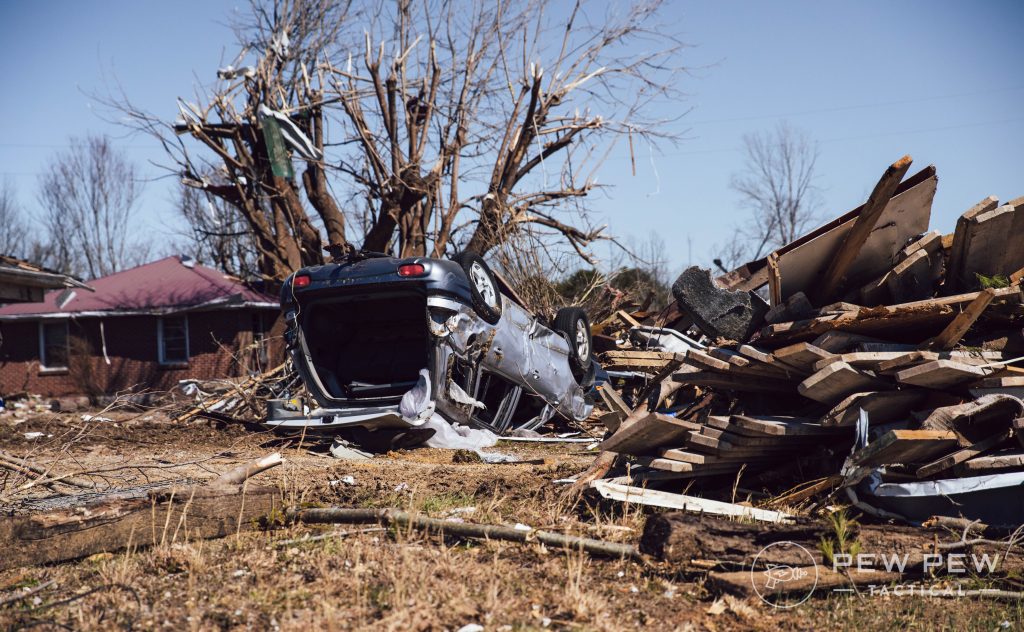
In the end, the tornado missed us…barely. And though we were spared the tornado’s onslaught, other neighborhoods were not so lucky.
After that, I couldn’t help but think there were a lot of things regarding tornadoes that I needed to know.
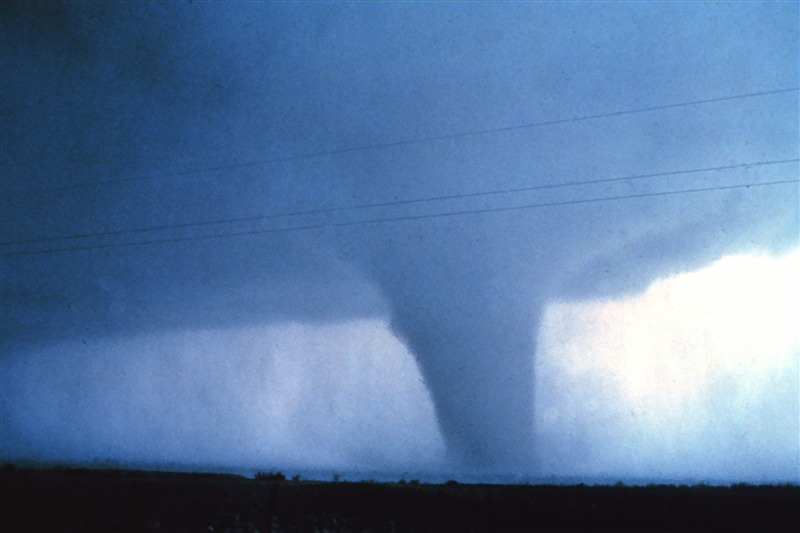
And that’s what we’ll do today. We’re going to look at how to prep for a tornado, what to do when you’re in the midst of one, and how to survive afterward.
Keep reading…
Table of Contents
Loading…
Helpful Information to Know Ahead of Time
Being something of a tornado virgin, I had absolutely no idea what was going on. Was there something special that I should be doing? Something that could increase my chances of making it through?
For those who may be in the same boat as me, here is what you need to know science-wise about tornadoes.
To begin with, nobody really knows why they form.
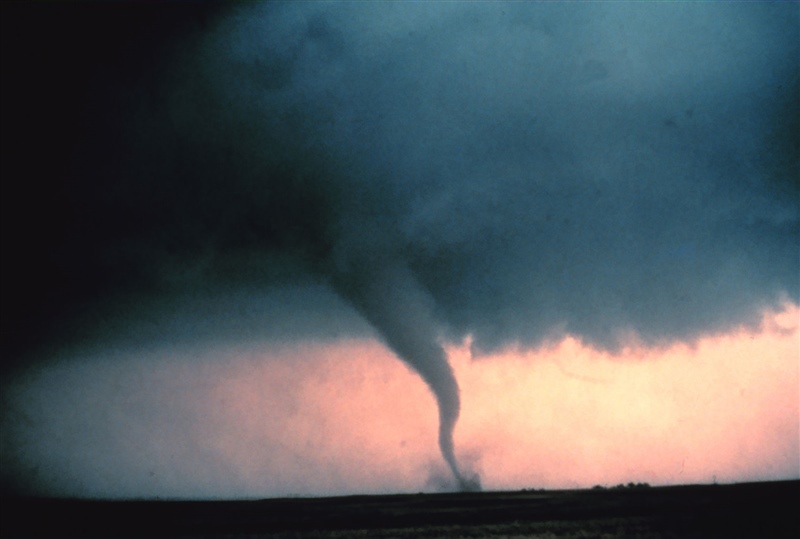
Scientists have some inkling – obviously, or we’d never be able to issue alerts to people ahead of time. Still, nobody knows exactly why tornadoes happen.
What we do know is that they’re prevalent.
They’ve been reported in all 50 states, meaning that it doesn’t matter whether you live in Tornado Alley or not.
Unfortunately, your local terrain doesn’t offer any protection from a tornado’s occurrence.
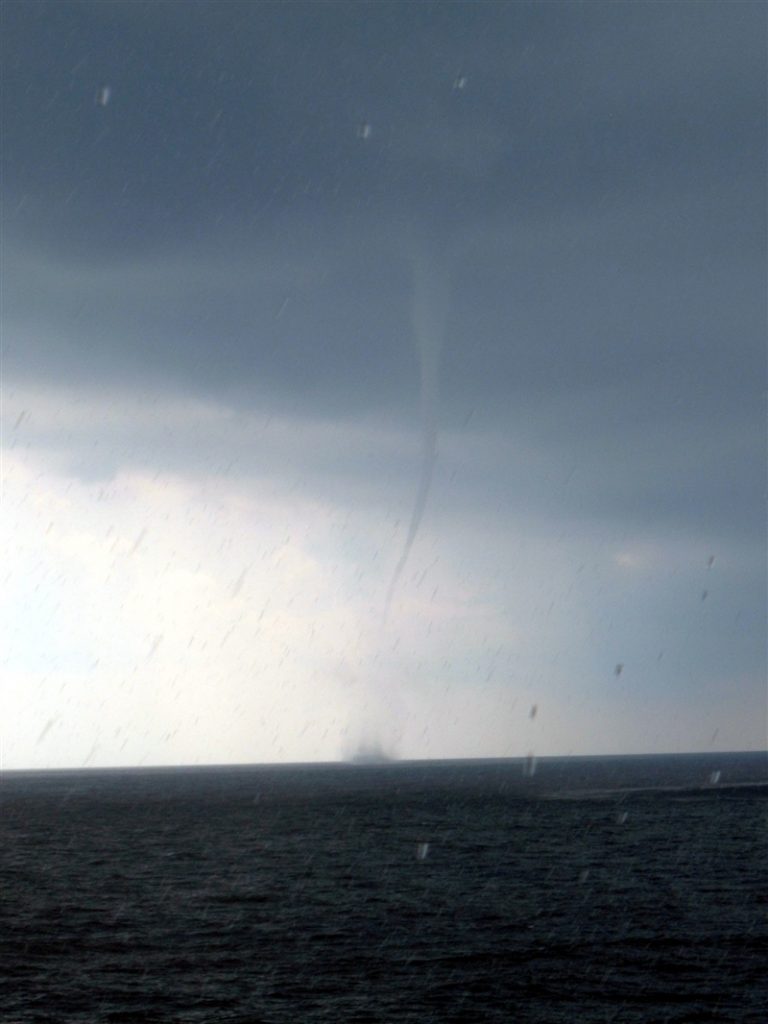
There’s also something of a tornado “season” as well.
Within the US, this is from April to June, as this is the time of year that the majority of tornadoes strike. Of those tornadoes, the greater majority of them occur between 4p-9pm as well.
For a millennium, mankind has had to know how to read the weather or else risk dying from the elements.
Few people anymore can look out into the sky and predict incoming weather.
“My phone will tell me. Sheesh.”

While a smartphone most certainly is a powerful tool, there’s no replacement for knowing how to read the weather of your own accord.
If you see greenish skies, large hail, wall clouds, beaver’s tails, or inflow bands or hear the sound tell-tale “freight train” sound, you know there’s a very good chance that there’s a tornado on its way.
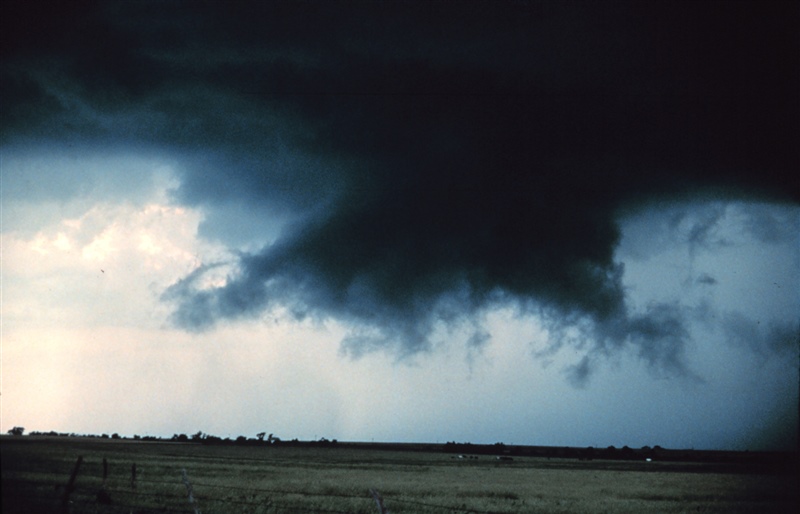
This knowledge in and of itself doesn’t protect you, but it does give you valuable time to make decisions.
And that can be the difference between life and death.
Prepping for a Tornado: Essential Gear
It’s beneficial to have some inkling of what to do in the event of a tornado. So we’ve got some tips on what to do before a twister lands in your neighborhood.
1. A Proper Storm Shelter
Hands down, I believe the best pre-tornado prep is a proper storm shelter.
Some soil, like in the Midwest, isn’t really suitable for building basements. As a result, not a lot of homes throughout Texas or Oklahoma come with a safe underground location to run to when a tornado arrives.
If a basement is completely out of the question, I believe you should have a storm shelter.
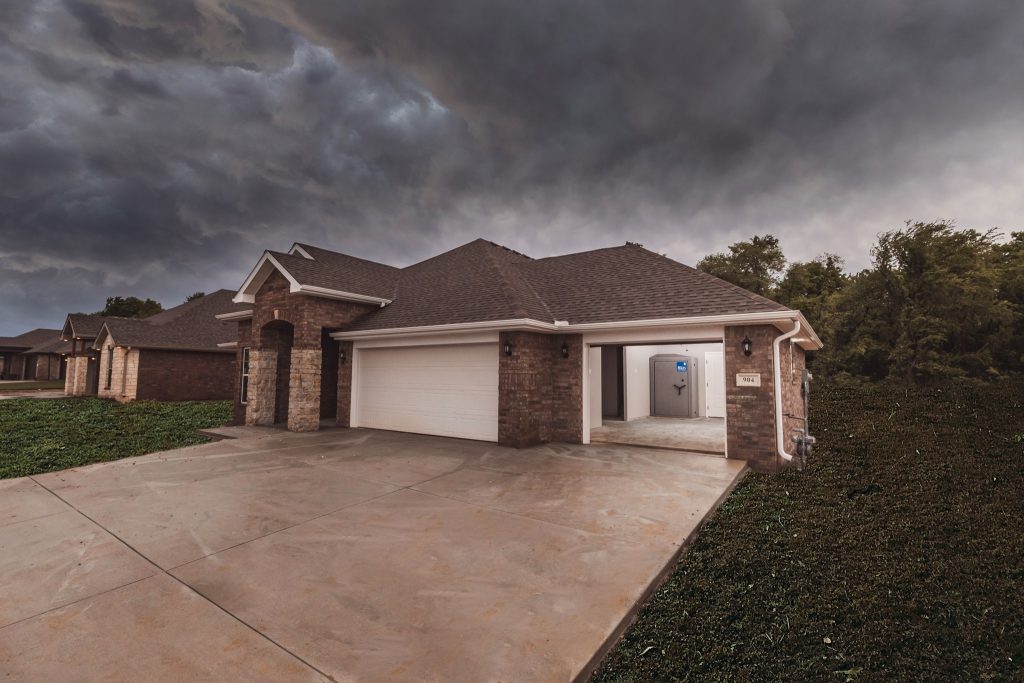
They are expensive, no doubt about that. But we are talking about the lives of your loved ones here.
Shoot, even if you make your own out of concrete, at least have some way to protect yourself from the ravages of 200 mph winds.

Regarding commercial models, they come in above and below-ground options and offer a reinforced design.
This structure won’ get sucked up into the sky with you inside. They also decrease your chances of being crushed or impaled by a flying object.
2. Water & Food
You’re likely not going to need to shelter within a safe room long enough to starve – most tornadoes are over within 10 minutes.
But you might not have a home left standing when you exit your shelter.
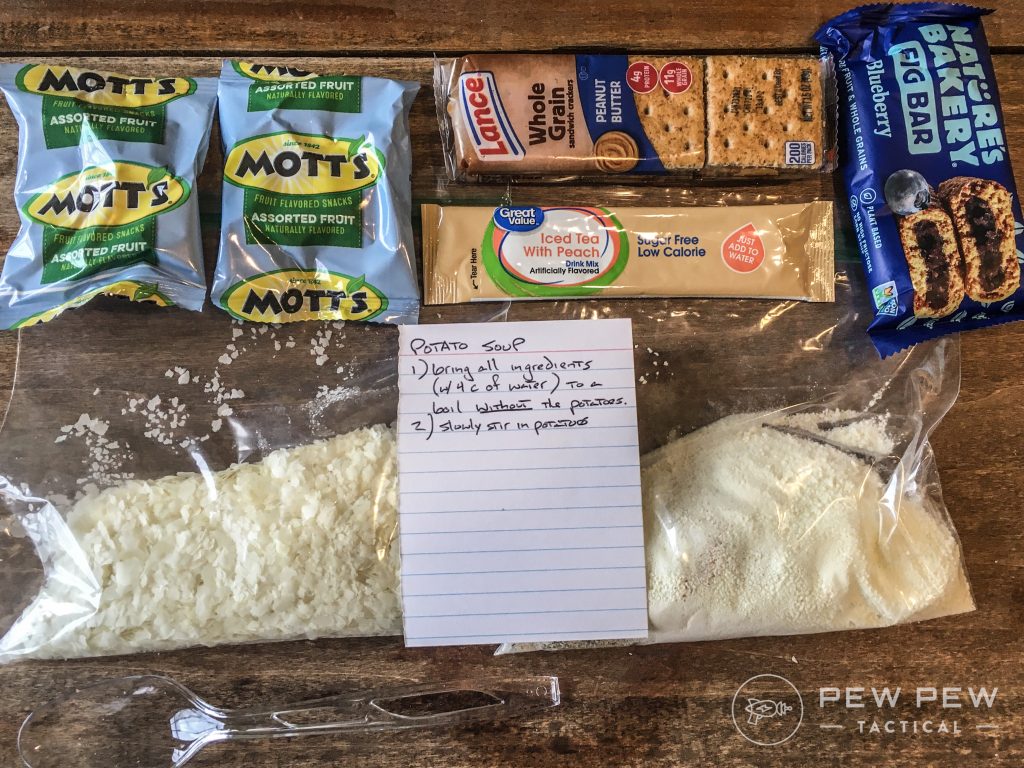
So, it’s best to have at least two days’ worth of food and water within your shelter or bug-out bag.
That way, you are granted something of a cushion between today and going hungry.
-
25% off all OAKLEY products - OAKLEY25
Copied! Visit Merchant
3. Whistles
In the second-to-worst case scenario, you get buried underneath a bunch of rubble.
If this happens and you end up trapped, you need a way to signal to others.
A whistle is the best way to do this.
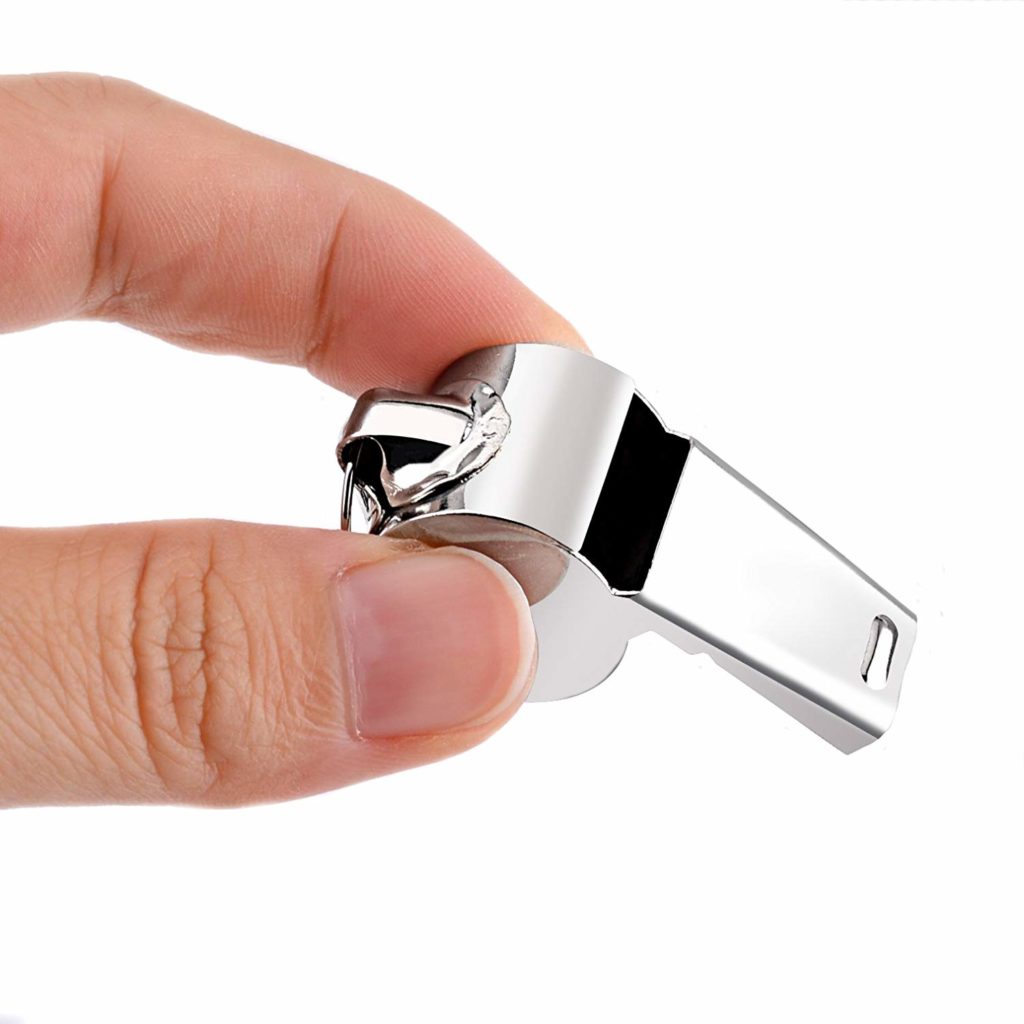
Repeatedly yelling at the top of your lungs for help will only lead to losing your voice, preventing you from shouting for help when somebody’s actually nearby.
A whistle preserves your voice and also travels farther.
-
25% off all OAKLEY products - OAKLEY25
Copied! Visit Merchant
4. Blankets
I highly recommend keeping blankets in your tornado shelter, if possible.
Cramped for space? Utilize mylar emergency blankets instead.
These easily tuck into a bug-out bag and truly work. I’ve had the opportunity to use these before and can attest to the fact.
-
25% off all OAKLEY products - OAKLEY25
Copied! Visit Merchant
5. Waterproof clothes
Tornadoes and rain often go hand-in-hand. After a tornado passes, rain may still be present.
Rain makes you cold and uncomfortable.
Even in the summer months, if you get wet, you can very easily end up cold.

In a disaster situation, we want to maintain our core body temperature.
Should your home be destroyed, or should you need to assist in looking for/helping somebody, you want the proper attire to make it to safety or search.
A poncho, rain jacket, or the like stuffed into a bug-out bag should easily do the trick.
-
25% off all OAKLEY products - OAKLEY25
Copied! Visit Merchant
6. Flashlights/Lanterns
A tornado often kills surrounding power due to downed lines, trees, etc.
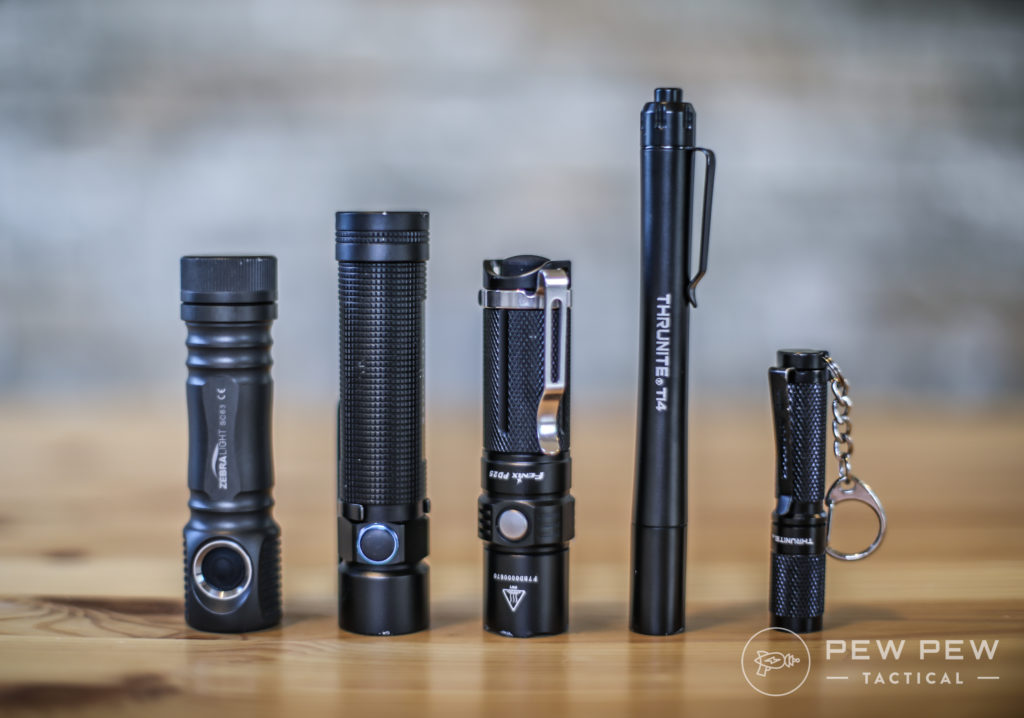
And if you’re searching for someone/something, stuck in a pitch-black basement all night, or trapped in a room under rubble, you want the ability to see your surroundings.
A flashlight or other means of battery-powered light should be something that you have easy access to.
-
25% off all OAKLEY products - OAKLEY25
Copied! Visit Merchant
7. Prescription medicines
If you or a family member needs daily medication, will you have ready access to a refill should you run out of pills?
What happens if your doctor’s office or pharmacy is destroyed?
These are questions that you should take into account when preparing your tornado “safe room.”
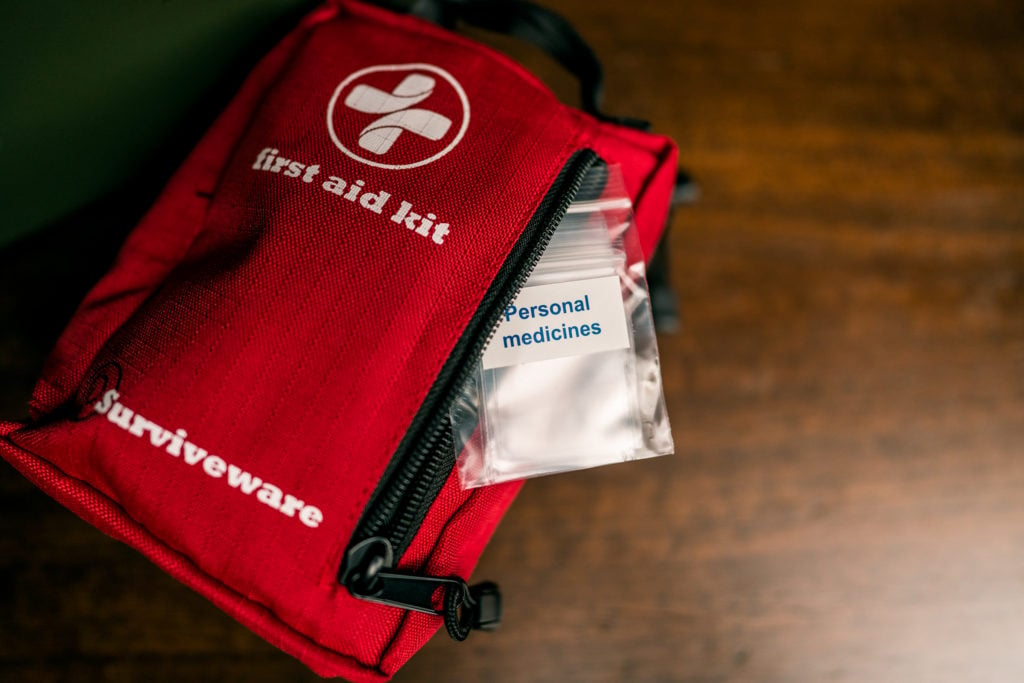
Place meds within your shelter or in a very easy to access location so they can quickly be stuffed into a pocket as you head for shelter.
Even if you just keep three days’ worth in a Ziploc bag in your bug-out bag, that provides at least some layer of security.
8. Important Documents
Ever lost a passport, social security card, or the like? Then you know how much of a pain it is to replace these items.
To help, keep an extra copy of important documents in a secure location within the “safe room.”

Alternatively, if you don’t feel comfortable having an additional physical copy of such documents, store a digital scan on an encrypted drive.
9. Communication Device
Immediately post-disaster, you’ll want to know if friends and family are safe. Not having this knowledge is truly torture.
During the tornado I experienced, my wife was out shopping somewhere in the city. I had no idea whether she was ok or buried under a pile of rubble somewhere.
That wasn’t fun.
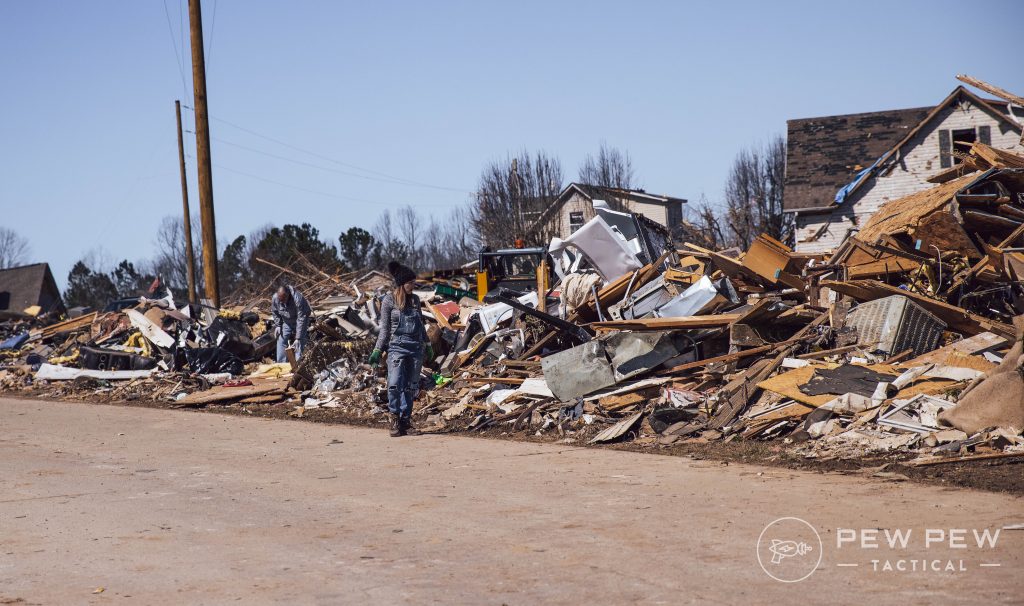
As such, you need some way to contact your family. Like other aspects of prepping and safety, it is best to have layers of redundancy to your plan.
One of the easiest ways to ensure that your family knows you’re safe and vice versa is to download the Red Cross Tornado App on everyone’s phone.
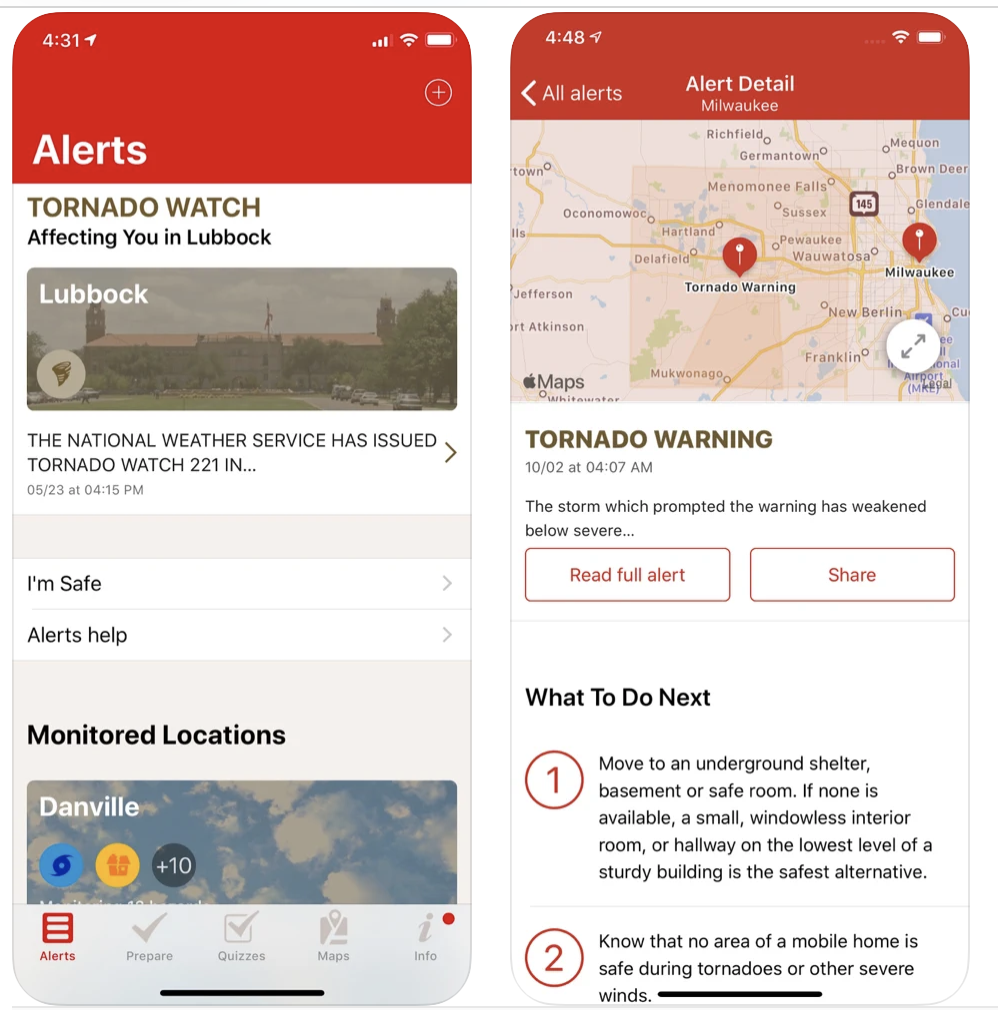
Within this app, you mark “I’m Safe” after the tornado. The app sends out a message via social media, text, and/or email, and everybody with access to your profile. That way, they know you’re ok.
Bonus, the app delivers tornado watch and warning alerts, ensuring that you, in fact, receive notifications.
Tornado App also gives you a map of all of the current Red Cross shelters within your region should you need to seek shelter.
Another option: ham radios.
There is a growing recognition of the fragility of our current electrical grid and other high-tech means of communications, and HAM radio help plug those holes.

Personally, I recommend a radio like the UV-3R in all family members’ vehicles. It’s a cheap little radio that easily tucks away until needed.
Provided this is an option that you would like to put into action, I also highly recommend printing out HAM emergency frequencies, or better yet, programming them into your radio.
This enables you to quickly tune into the proper frequencies post-disaster, rather than scanning through and hoping for the right one.
If this option doesn’t appeal to you, you can still receive weather updates via a NOAA weather radio.
-
25% off all OAKLEY products - OAKLEY25
Copied! Visit Merchant
Want another option? Firechat.
It’s a mesh network app, meaning that your message will bounce from node to node via Bluetooth until it reaches its intended target.
Using Bluetooth means you don’t have to worry about your message failing should cell service become unavailable.
However, this only works though if there are several other nodes, aka people with Firechat downloaded, nearby.

As such, Firechat likely works best in an urban environment. Rural locations won’t see near as much benefit if any.
While I wouldn’t focus on utilizing Firechat as my main means of disaster comms, it most certainly acts as a respectable tool within your post-disaster toolbox.
10. Proof of Property
Though not lifesaving, this is headache-saving.
Pictures of all of the expensive items you own, and if possible, photographs of the receipts should be kept on a USB drive stored in a waterproof container within your storm shelter.
Insurance companies can be an absolute pain.
As such, I would keep a minimum of two encrypted USB drives in safe locations with information about your home and the items in it.
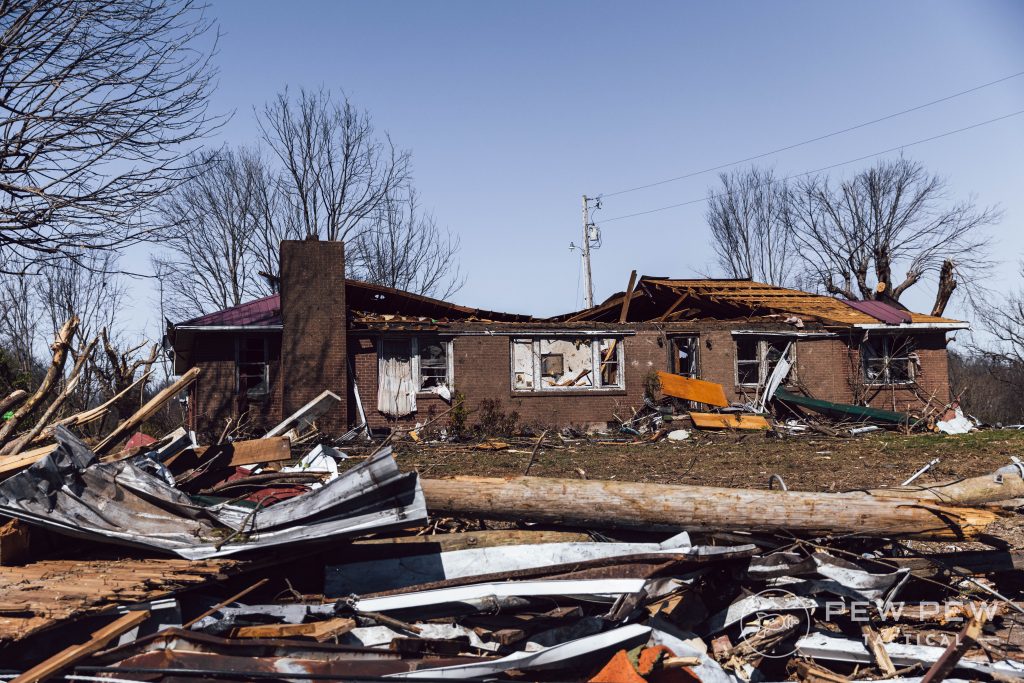
One I would keep in my storm shelter, and the other I would keep off-site at a secure location.
And yes, you do want some form of encryption on these – particularly if you have firearms on them – so that other people can’t snoop through your belongings.
While the cloud may seem more convenient, I don’t recommend it due to hacking concerns.
11. Bug Out Bag
A bug out bag should be kept readily available at all times. If you do already have one set up and within easy access, you’ll be able to quickly grab everything you need as you run for shelter.
You can’t waste time searching for meds, government documents, and the like. It’ll be a one-stop grab, and you’ll be on your way to safety.
Another reason to consider having all of the supplies that you need within a BOB is in case your house is destroyed.
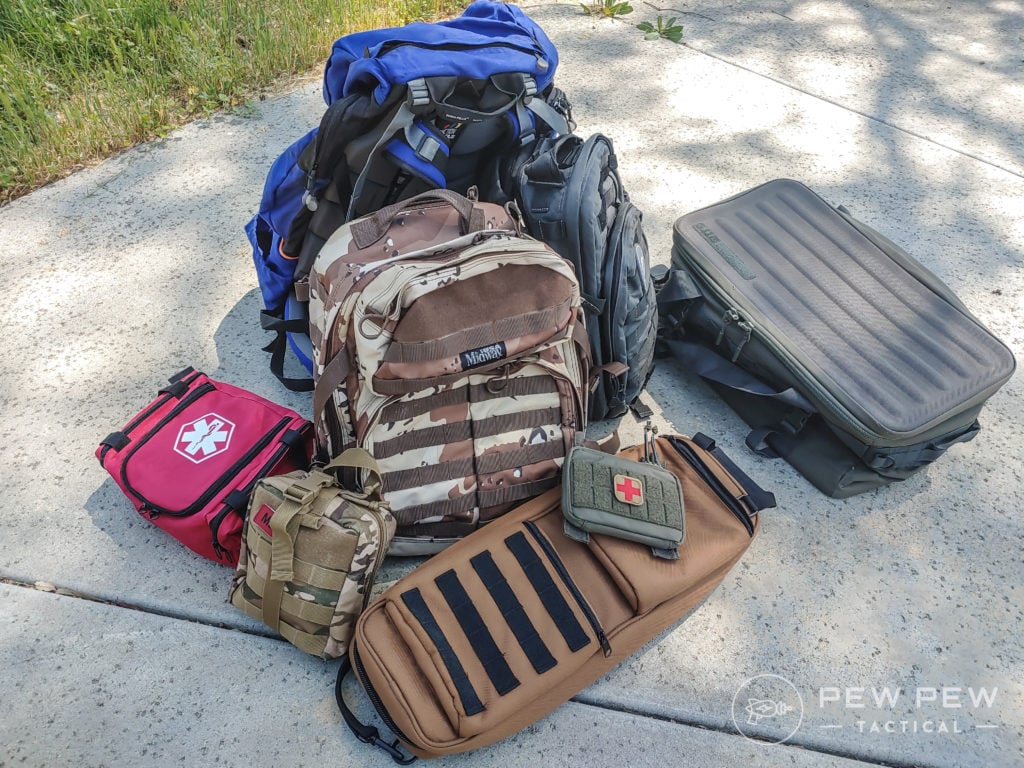
Perchance so, you’ll now have some of the basics to survive off of while you’re temporarily staying in a hotel room as you attempt to get the cleanup process started.
If you have children, this can be a major lifesaver, as you won’t have to worry about having diapers, clothes, or other essentials for them for at least a day or so.
Of note: everything listed above for tornado preparedness can easily stow within a bug-out bag.
For more ideas on what to store in your bug out bag, see our Bug Out Bag List.
How To Survive a Tornado
If a tornado comes your way, you’re likely going to be one of four places — at home, on the road, at a commercial business, or on foot.
There are certain steps that are needed in each of these locations to help improve your survivability, and if you don’t follow them, you could be placing yourself at unnecessary risk solely due to ignorance.
So, let’s break down each of these environments.
At Home
Your best bet is going to be to head to your basement if that’s an option.
The safest place to hide once in your basement is going to be underneath a workbench, mattress, or something else really sturdy.
Keep in mind that if you are sheltering where some type of heavy appliance is right above your head, you could end up looking like Play-Doh. Twisters destroy, and your ceiling is no exception.
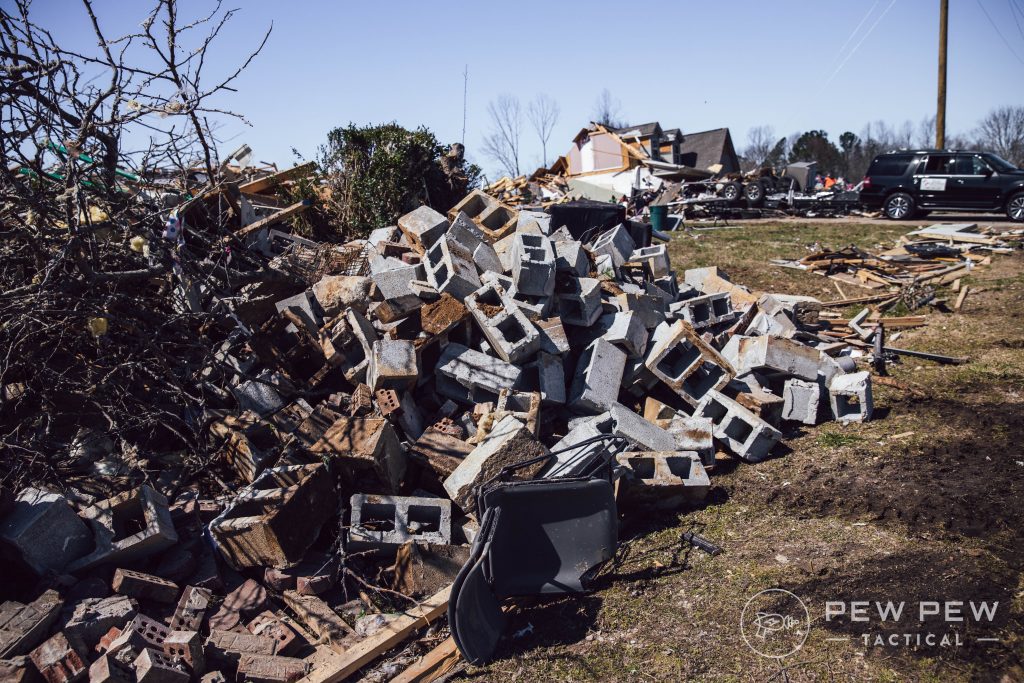
There’s an old myth that sheltering within the southwest corner of your basement is a safer option too. Unfortunately, that’s not reality.
Tornadoes can come from any direction, and as a result, there’s no guarantee that hiding within one particular orientation of your basement is any safer than any other part of it.
Another urban legend that’s been around for years with tornadoes is that by opening your windows, you help to “equalize the pressure,” and your house doesn’t implode.
Aside from not doing what it is purported to do, opening all of the windows in your house wastes precious time and exposes you to potential debris.
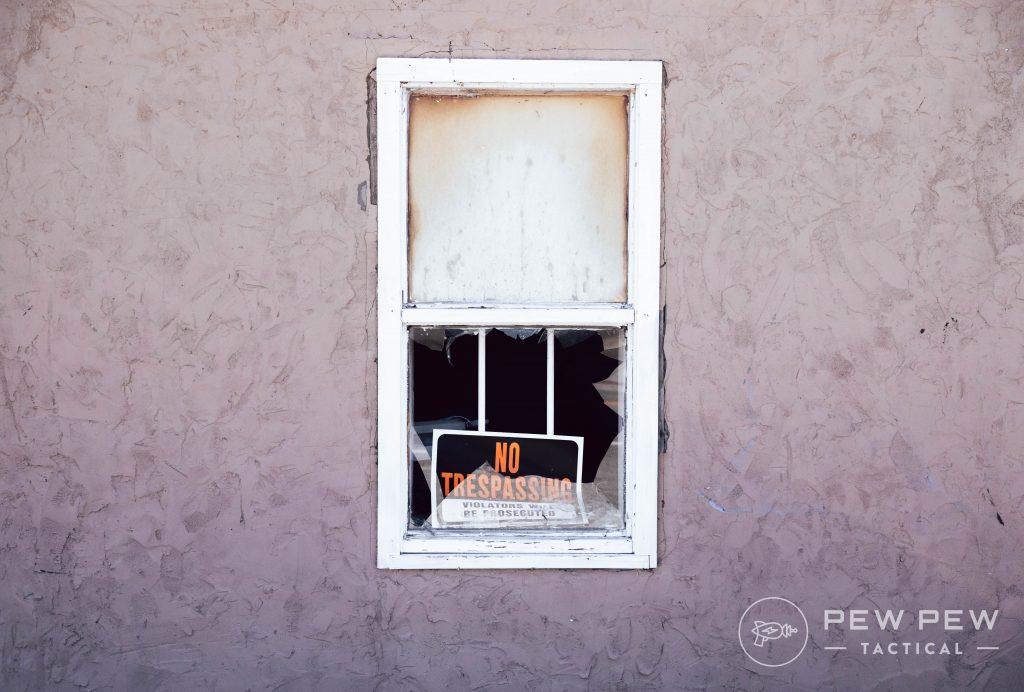
If a tornado hits your house, your home is going to be destroyed, whether your windows are open or not.
Being right next to a window during a tornado is an incredibly risky business as well.
In essence, you’ll be standing on the business end of a claymore and an easy means of entry for other flying debris to impale you against the other side of the room. So, stay away from windows.
If your home doesn’t have a basement, your best bet is to head to a room that’s in the interior of the house and then shelter inside of that.
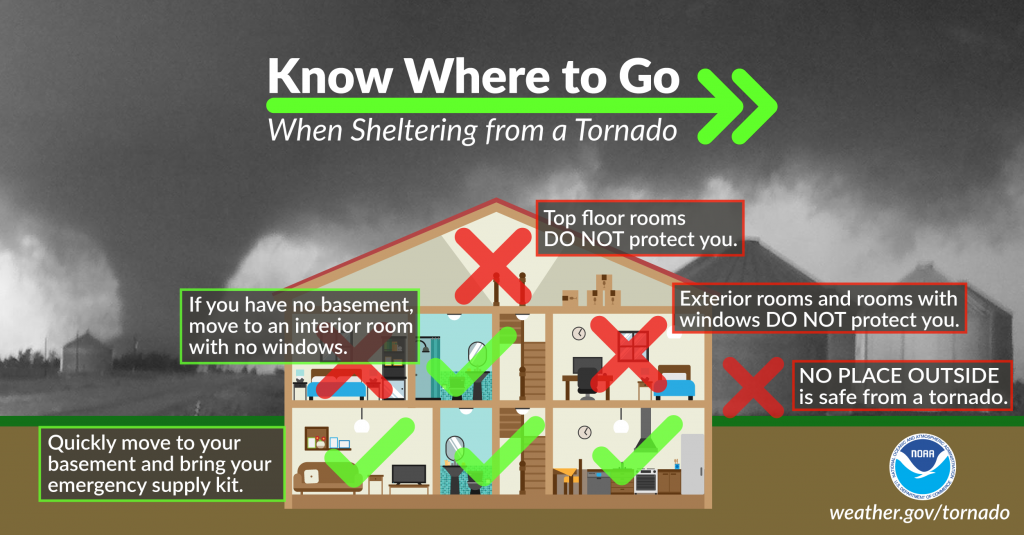
As long as we’re talking about homes, though, we need to issue a few caveats. If you’re seeking shelter in a mobile home, shed, or tent, you need to understand that none of these areas are safe.
These are all easy to pick up/roll, and the walls are very flimsy compared to a traditional home. You’re much better off seeking shelter somewhere else.
On the Road
Let’s say you’re on the way to your girlfriend’s house – about a four-song drive – when clear signs of a tornado appear.
Well, here’s a fun fact for you: staying in a vehicle during a tornado is a notorious death trap.
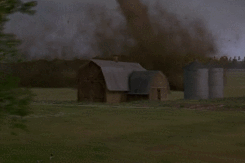
Cars are easily picked up and thrown about by tornadoes, and you’re not going to be sure whether that will involve being rolled 20 feet or being picked up into the sky and thrown 600 yards.
If you’re stuck on the road with zero chance of making it to shelter in time, your best bet is to exit your vehicle and seek shelter in a low-lying area, such as a ditch or ravine.
Once there, lay prone on the grass.
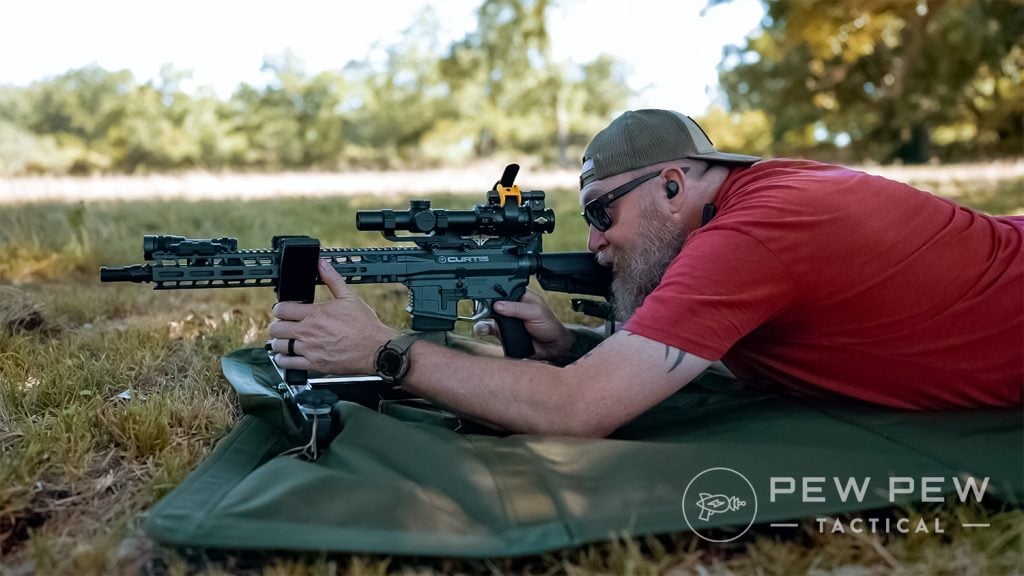
If you do decide to stay in your car, attempting to get down and cover your head may add a little bit of protection.
At a Business
When humans are scared, we like to group together with others. When something scares us, we instinctively flock to where others are gathered, seeking safety in numbers.
It’s because of this desire some people gather in a location where there are as many people as possible – say, an auditorium, gym, or cafeteria.

However, this would be a mistake, and these are not areas that are safe in the event of a tornado.
The safest place to shelter in these types of environments is still going to be a central room, preferably in the basement.
On Foot
Let’s say that you’re out on a run on your local paved trail when all of a sudden, you hear tornado sirens. You’re 2 miles into the trail, and there aren’t many places to shelter. What do you do?
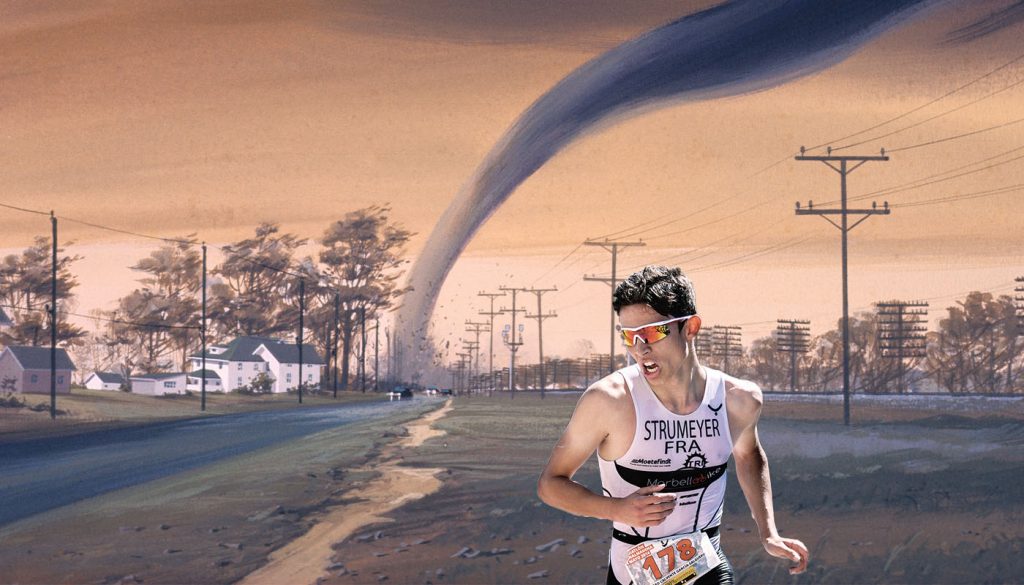
To begin, don’t attempt to outrun the tornado. You can’t.
Your best bet is still going to be to find a low depression into the ground and lay prone, covering your head.
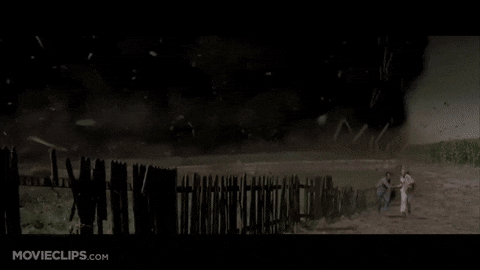
Surviving the Aftermath
Contact EMS
If you exit your shelter after the danger has passed and your home is fine, the first thing that I would do is contact friends and family to ensure everybody else is safe.
This is the best case, though you’ll likely be living without power for a little while.
However, if your location has been impacted by a tornado and there are injuries, you’re going to want to contact 911.
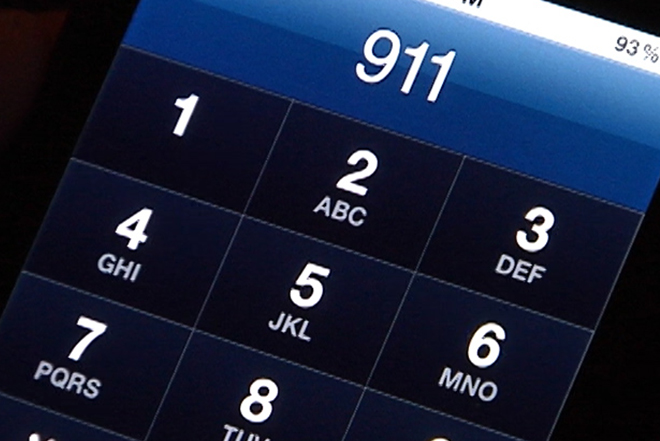
This is another reason that I like HAM radio.
After a disaster rocks your area, every HAM radio operator within your region is going to start listening to various frequencies instantaneously.
If you do not have cell reception and can’t make a call out for an ambulance, announcing who you are, your location and the emergency over a HAM frequency will get help coming your way much faster.
Though you may not have cell service, that HAM operator may. They can then call the dispatcher’s office and get help headed toward your current location.
Take Pictures of the Damage
Let’s face it: insurance companies have more in common with Mr. Incredible’s former desk job than most of us would like to care to admit.

Their job is to make money, and they do that by denying claims or by paying a fraction of what a claim should be.
Don’t get me wrong; you need to have insurance. But you also need to have the understanding that they’re likely not going to be understanding.
Sounds harsh, but so it is.
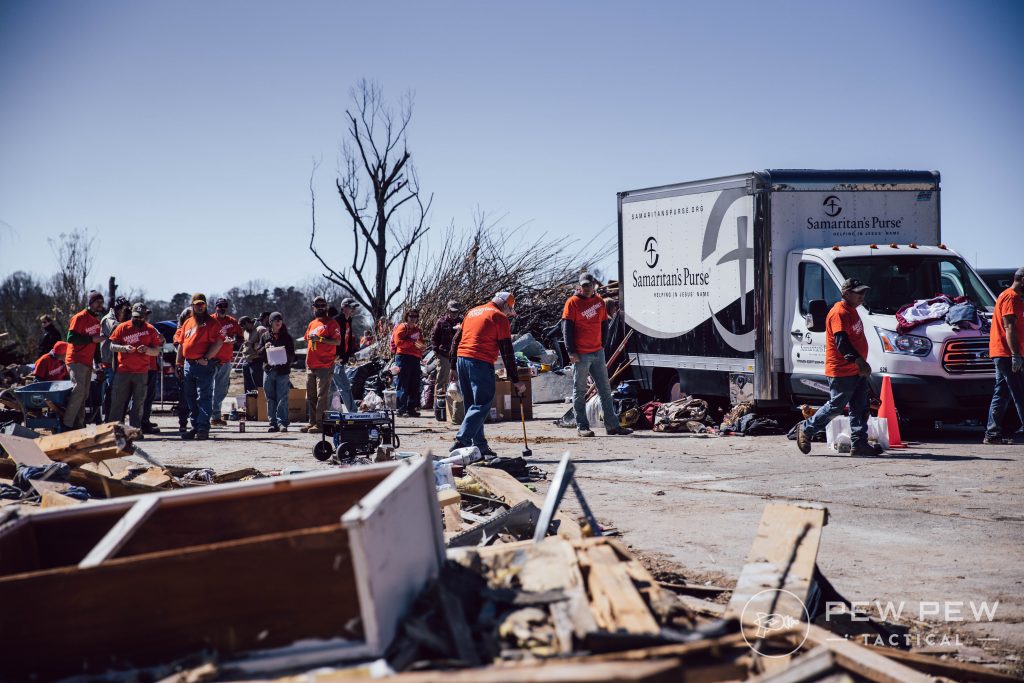
You need as much proof as possible that things really were as bad as you said they were.
Pictures are going to be one of the main ways that you can do this.
So, before you touch anything – provided nobody is hurt or trapped– take as many pictures as possible.
Final Thoughts
Tornadoes are a scary thing, and they deserve to be taken seriously. They truly are deadly, killing 56 people per year within the US. You need to take the steps necessary to protect both yourself and your family.
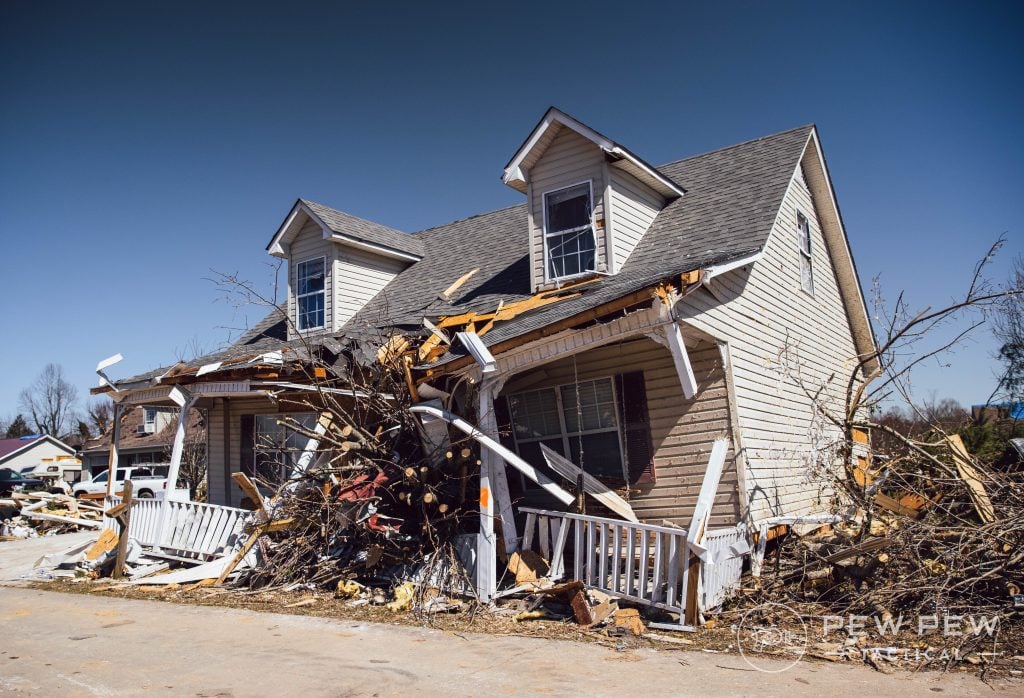
Regular reader of PPT? Then you already understand the importance of a firearm for protecting your family and self from harm, so why not take the same approach to an incredibly deadly and destructive form of weather?
If you follow the above steps, you’ll have done just that.
Are there other considerations that we didn’t discuss above? Have you had prior experience with a tornado yourself? Let us know in the comments below! For more prepping resources, check out Prepping 101 and our Ultimate Resource for Survival & Prepping.

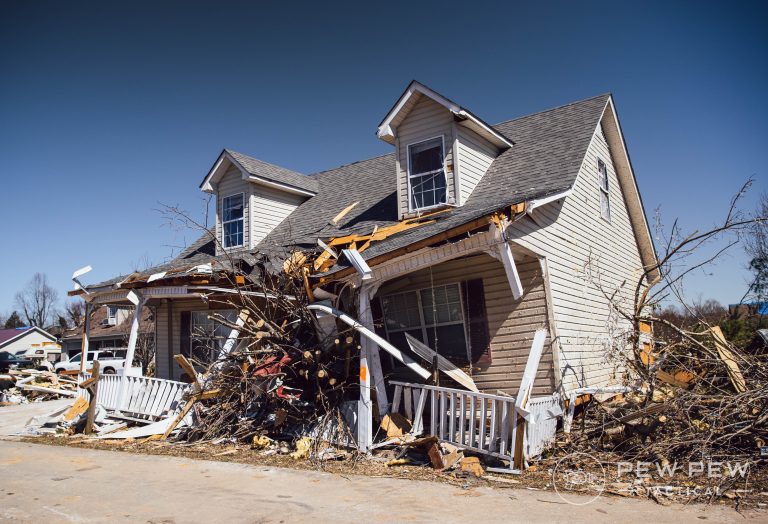



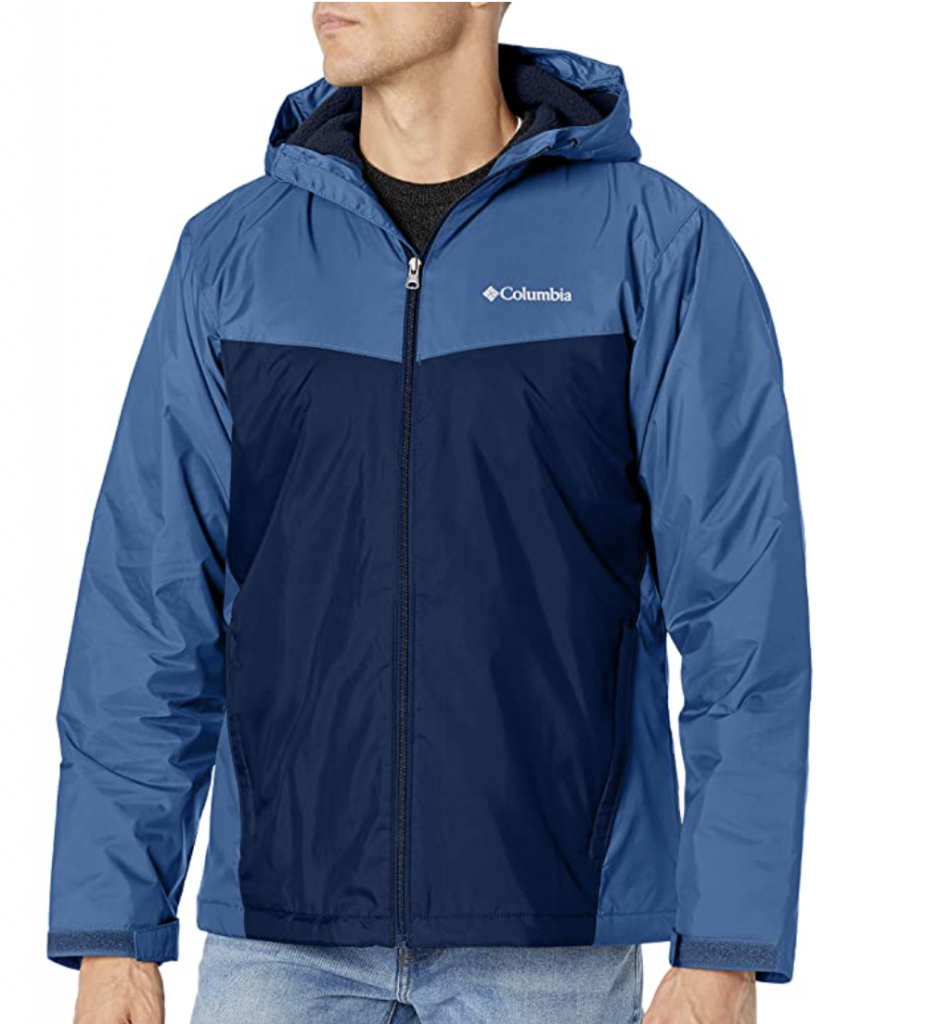









3 Leave a Reply
Absolute great article. Most people don't worry about tornados until to late or to close. I'm one of the to close people after a tornado missed my area by maybe a mile. Now I'm prepped with a concrete storm shelter prepared with basic essentials of food, drink and clothing. Oh yeah paper work too as I trust any insurance company about as much as a 1970's used car salesman.
Until you have the funds for a storm shelter, you might already have something thick like a twin-size mattress to throw over yourself & family while huddled in the bathtub in the inner, 1st-floor bathroom to protect from falling debris. A bump helmet & any other protective gear (even the kind we use for larping) would be better than nothing.
Kentucky, here. After having a tornado blow through my town December 2021, (miss me by a mile). I like so many others decided it was time to get a shelter installed. Got me one of those concrete monsters that get put mostly in the ground. Prepped it all up with food, water, document copies, clothing and a few other odds and ends. I try not to look at the expense of it but just look at it as another insurance policy. Have it in hopes you never need it.